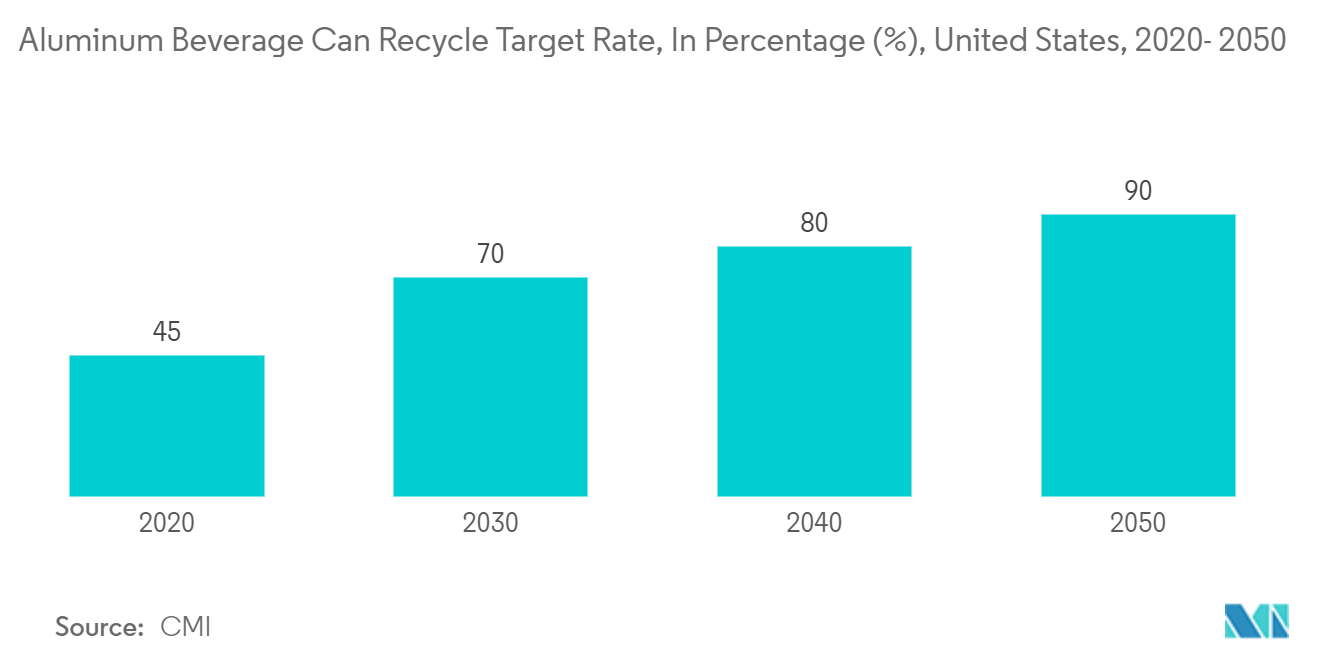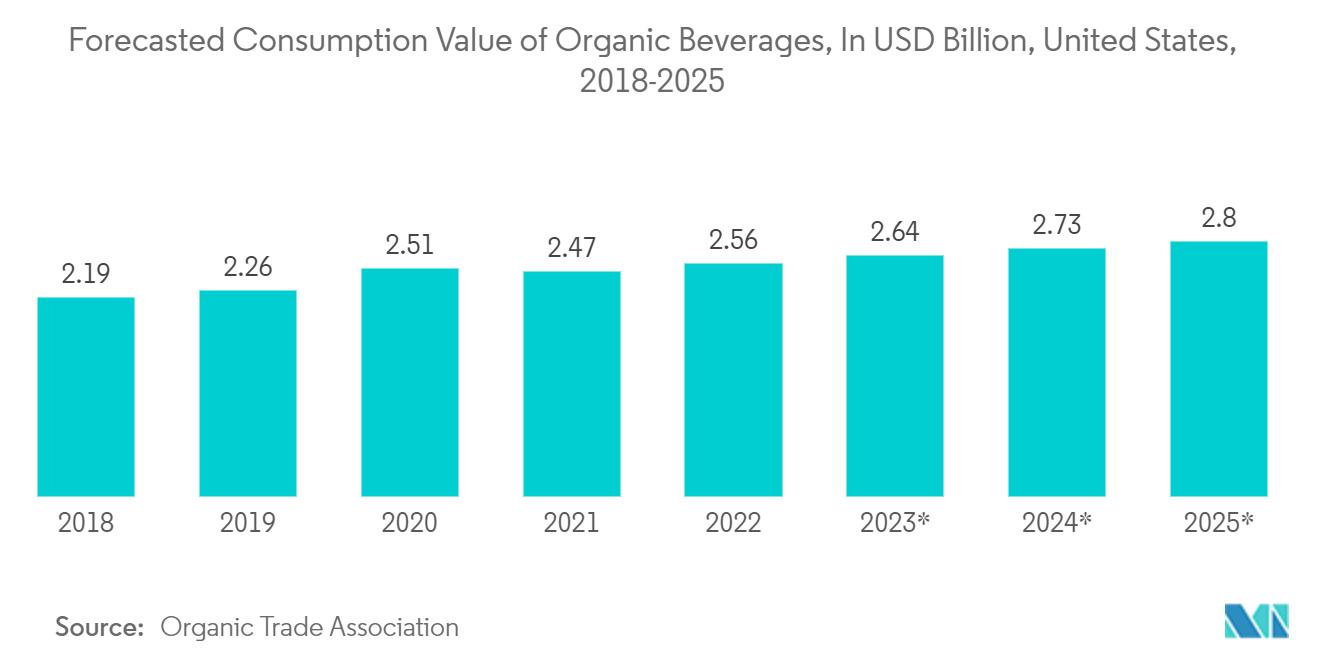Market Trends of USA Metal Cans Industry
Aluminum to Witness the Growth
- Aluminum cans offer long-term food quality preservation benefits and nearly 100% protection against light, oxygen, moisture, and other contaminants. The material is rust and corrosion-resistant, providing one of the most extended shelf lives considering any packaging. The rising application of aluminum cans in the food and beverage industry can be attributed to their protective properties, sustainability advantages, and convenience. This trend is expected to continue as both manufacturers and consumers recognize the benefits associated with aluminum packaging.
- Significant weight reductions are made possible by creating new alloys for aluminum aerosol cans, which are advanced in collaboration with slug manufacturers. This promotes even greater sustainability. The same applies to complete-layer transport packaging, which is utilized more frequently in the sector and benefits logistics and the environment.
- The aluminum aerosol can market share is driven by the increased usage of these cans in the personal care and automotive industries. Due to their practical packaging options, 100 to 250-ml aluminum aerosol cans are becoming more widely used. Other segments, including 251 ml to 500 ml, less than 100 ml, and others, are capturing better revenue in the global market.
- Aluminum cans have a higher recycling rate and more recycled content than competing package types. According to the Aluminum Association, it is one of the most recycled materials on the market. In April 2022, Ball Corporation partnered with Recycle Aerosol LLC to boost the recycling rates of aluminum aerosol cans in the United States. The collaboration would increase aerosol can recycling and establish a closed-loop system in which used cans are recycled into new aerosol cans.
- According to the Aluminum Association, the aluminum industry recycles more than 40 billion cans annually. The United States saves up to USD 800 million per year by recycling the amount of aluminum that goes into landfills presently.
- Recently, aluminum beverage cans have become the most recyclable beverage containers in the country. The beverage industry members of the Can Manufacturers Institute (CMI) are on a mission to raise US aluminum recycling rates to new levels. CMI published an in-depth primer and roadmap to explain how the CMI's ambitious 2020-2021 recycling rate targets were met. The new aluminum beverage recycling rate targets, announced by CMI members, aim to achieve 70% by 2030, 80% by 2040, and 90% recycling rates by 2050 in the United States.

Non-alcoholic Beverages to Witness Growth
- The beverage industry includes a variety of beverages, from carbonated soft drinks and juices to coffee and tea. It targets consumers with ever-changing tastes for refreshing and indulgent drinks. Health and wellness concerns are driving consumers to seek healthier beverages. This has increased the demand for functional drinks such as fortified water, sports drinks, vitamin and mineral-fortified beverages, and probiotics. Consumers are becoming increasingly aware of their sugar intake and its impact on their health and well-being. As a result, there is a growing need for sugar-free, natural, and organic drinks. The evolving landscape of the beverage industry has been a key driver for the growth of the non-alcoholic beverage cans market.
- New product launches in the non-alcoholic beverage sector have significantly contributed to the growth. For instance, in January 2023, PepsiCo launched Starry, a lemon and lime carbonated soft drink with a crisp and refreshing taste. The drink is available in Regular and Zero Sugar versions at United States retailers. Carbonated soft drinks are traditionally packaged in cans, and PepsiCo's introduction of Starry adds another product to the market that relies on cans for packaging. This can increase demand for standard and slimline beverage cans commonly used for carbonated beverages.
- According to the Beverage Industry Magazine, Red Bull was the United States' largest energy beverage brand in 2022, based on sales of about USD 6.85 billion. Energy drinks, including Red Bull, are typically packaged in cans due to their convenience, portability, and ability to preserve the product's freshness and carbonation. As Red Bull's sales grow, it directly contributes to an increased demand for beverage cans as the primary packaging choice for this product category.
- According to the Organic Trade Association, in 2022, the US consumption of organic beverages amounted to USD 2.5 billion and is forecasted to reach USD 2.8 billion by 2025. Organic drinks, which often include organic juices, teas, and other health-conscious options, are typically packaged in eco-friendly containers that align with organic and sustainable principles.
- Aluminum cans are a suitable choice for organic beverages because they are recyclable and align with the sustainability ethos of the organic movement. As consumption grows, the demand for cans as a packaging option for organic beverages may also increase.

